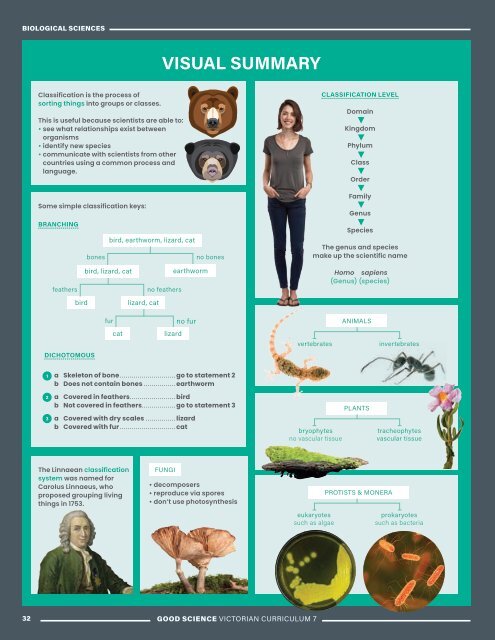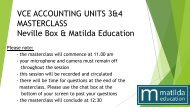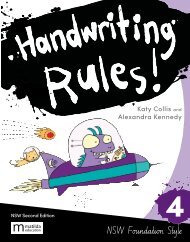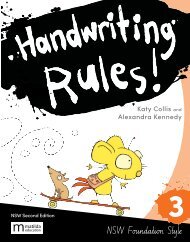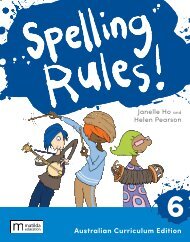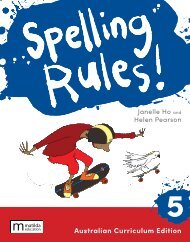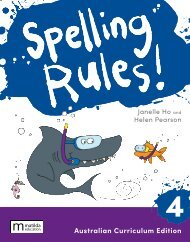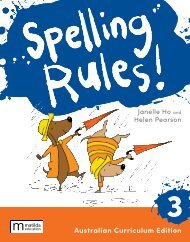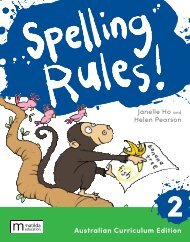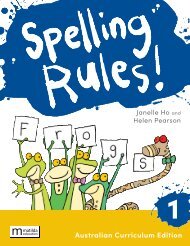Good Science Victorian Curriculum Year 7
Digital sample of Matilda's newest publication, Good Science Victorian Curriculum Year, authored by Emma Craven and Aaron Elias. For more information visit www.matildaeducation.com.au or email Katrina Tucker, katrinatucker@matildaed.com.au
Digital sample of Matilda's newest publication, Good Science Victorian Curriculum Year, authored by Emma Craven and Aaron Elias. For more information visit www.matildaeducation.com.au or email Katrina Tucker, katrinatucker@matildaed.com.au
You also want an ePaper? Increase the reach of your titles
YUMPU automatically turns print PDFs into web optimized ePapers that Google loves.
BIOLOGICAL SCIENCES<br />
VISUAL SUMMARY<br />
Classification is the process of<br />
sorting things into groups or classes.<br />
This is useful because scientists are able to:<br />
• see what relationships exist between<br />
organisms<br />
• identify new species<br />
• communicate with scientists from other<br />
countries using a common process and<br />
language.<br />
Some simple classification keys:<br />
BRANCHING<br />
feathers<br />
bird<br />
bones<br />
bird, lizard, cat<br />
bird, earthworm, lizard, cat<br />
lizard, cat<br />
no feathers<br />
earthworm<br />
no bones<br />
CLASSIFICATION LEVEL<br />
Domain<br />
Kingdom<br />
Phylum<br />
Class<br />
Order<br />
Family<br />
Genus<br />
Species<br />
The genus and species<br />
make up the scientific name<br />
Homo sapiens<br />
(Genus) (species)<br />
fur<br />
no fur<br />
ANIMALS<br />
cat<br />
lizard<br />
vertebrates<br />
invertebrates<br />
DICHOTOMOUS<br />
1<br />
a Skeleton of bone ............................go to statement 2<br />
b Does not contain bones ................earthworm<br />
2<br />
3<br />
a Covered in feathers .......................bird<br />
b Not covered in feathers .................go to statement 3<br />
a Covered with dry scales ...............lizard<br />
b Covered with fur ............................cat<br />
bryophytes<br />
no vascular tissue<br />
PLANTS<br />
tracheophytes<br />
vascular tissue<br />
The Linnaean classification<br />
system was named for<br />
Carolus Linnaeus, who<br />
proposed grouping living<br />
things in 1753.<br />
FUNGI<br />
• decomposers<br />
• reproduce via spores<br />
• don’t use photosynthesis<br />
eukaryotes<br />
such as algae<br />
PROTISTS & MONERA<br />
prokaryotes<br />
such as bacteria<br />
32 GOOD SCIENCE VICTORIAN CURRICULUM 7


